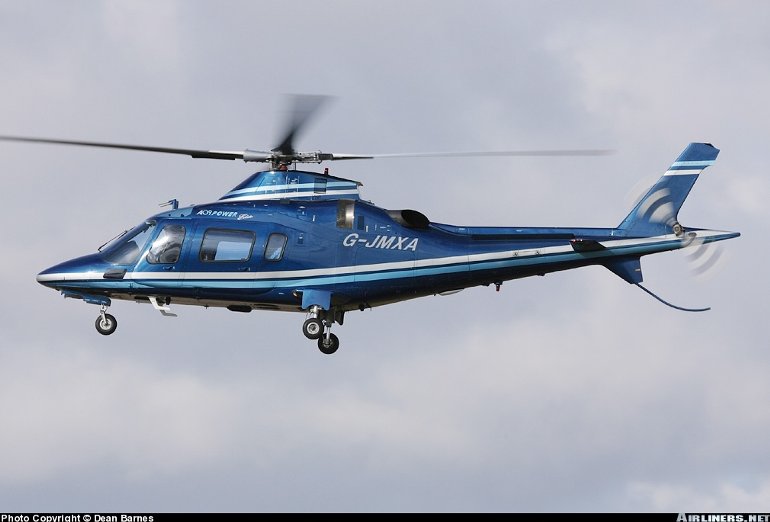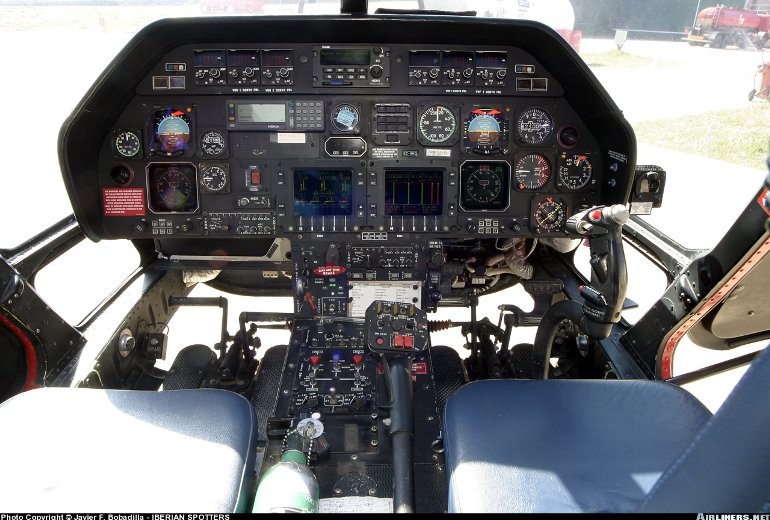Aircraft Technical Data
Agusta A-109


| Details | |
| Country of Origin | Italy |
| Type | Twin engined utility & corporate helicopter |
| History | The A-109 is a high performance twin helicopter, one of the most successful in its class during the course of its 25 year history. The first of four A-109 prototypes flew on August 4 1971. VFR certification was awarded on June 1 1975 although series production had already begun in 1974. First production deliveries took place in late 1976. The helicopter was originally named Hirundo, but this name was later dropped. Single pilot IFR certification was granted in January 1977. The base A-109A was superseded by the upgraded A-109A Mk.II from September 1981. Improvements incorporated in the Mk.II included a greater transmission rating, redesigned tailboom and a new tail rotor driveshaft, improved rotor blade life and modern avionics. The Mk.II is also available in widebody configuration with increased internal volume courtesy of bulged fuselage side panels and reshaped fuel tanks under the cabin floor. The Mk.II Plus has the more powerful 250-C20R1 engines, as does the A-109C. The 109C also has composite rotor blades. The A-109K first flew in April 1983 and is powered by two 470kW (640shp) max continuous operation rated Turboméca Arriel 1K1 turboshafts. The latest A-109 model is the PW-206C powered (477kW/640shp takeoff rated) A-109E Power, which first flew on February 8 1995 and was certificated in August 1996. Based on the A-109K-2 it also features a strengthened landing gear and improved main rotor. The engines feature FADEC. The A-109 has been developed into a number of mission specific configurations. Aside from executive transport it is used widely in medevac, police and patrol roles worldwide. Previously medevac configured A-109As were based on the standard airframe, but modifications engineered by the US firm Custom Aircraft Completions resulted in the A-109 Max, with transverse stretcher stowage and bulged side door transparencies. |
| Powerplants | A-109A Mk.II - Two Allison 250-C20B turboshafts rated at 300kW (400shp) max continuous operation, or 313kW (420shp) for takeoff, derated to 260kW (346shp) for twin engine operation. A-109E - Two 477kW (640shp) takeoff rated Pratt & Whitney Canada PW-206Cs. |
| Performance | A-109A - Max cruising speed 285km/h (154kt), economical cruising speed 233km/h (126kt). Max initial rate of climb 2110ft/min. Range with standard fuel and no reserves 648km (350nm). A-109E - Max cruising speed 289km/h (156kt). Max initial rate of climb 2080ft/min. Service ceiling 20,000ft. Hovering ceiling out of ground effect 13,300ft. Max range 977km (528nm). Max endurance 5hr 10min. |
| Weights | A-109A Mk.II - Empty equipped 1418kg (3126lb), max takeoff 2600kg (5732lb). A-109E - Empty 1570kg (3461lb), max takeoff 2850kg (6283lb). |
| Dimensions | Main rotor diameter 11.00m (36ft 1in), length with rotors turning 13.05m (42ft 10in), fuselage length 10.71m (35ft 2in), height 3.30m (10ft 10in). Main rotor disc area 95.0m2 (1022.9sq ft). |
| Capacity | Total accommodation for eight people including one pilot. In medevac configuration two stretchers and two medical attendants. |
| Production | Approximately 600 A-109s of all variants (civil and military) had been built by 1998. |
| Related Links | Agusta A-109 |
The backbone of this section is from the The International Directory of Civil Aircraft by Gerard Frawley and used with permission. To get your own copy of the book click here. |
|








